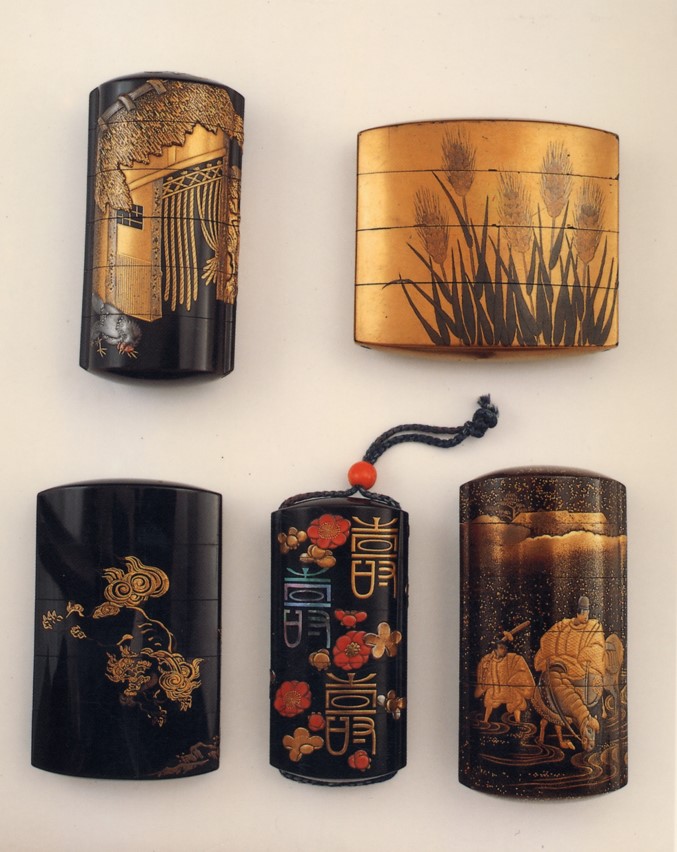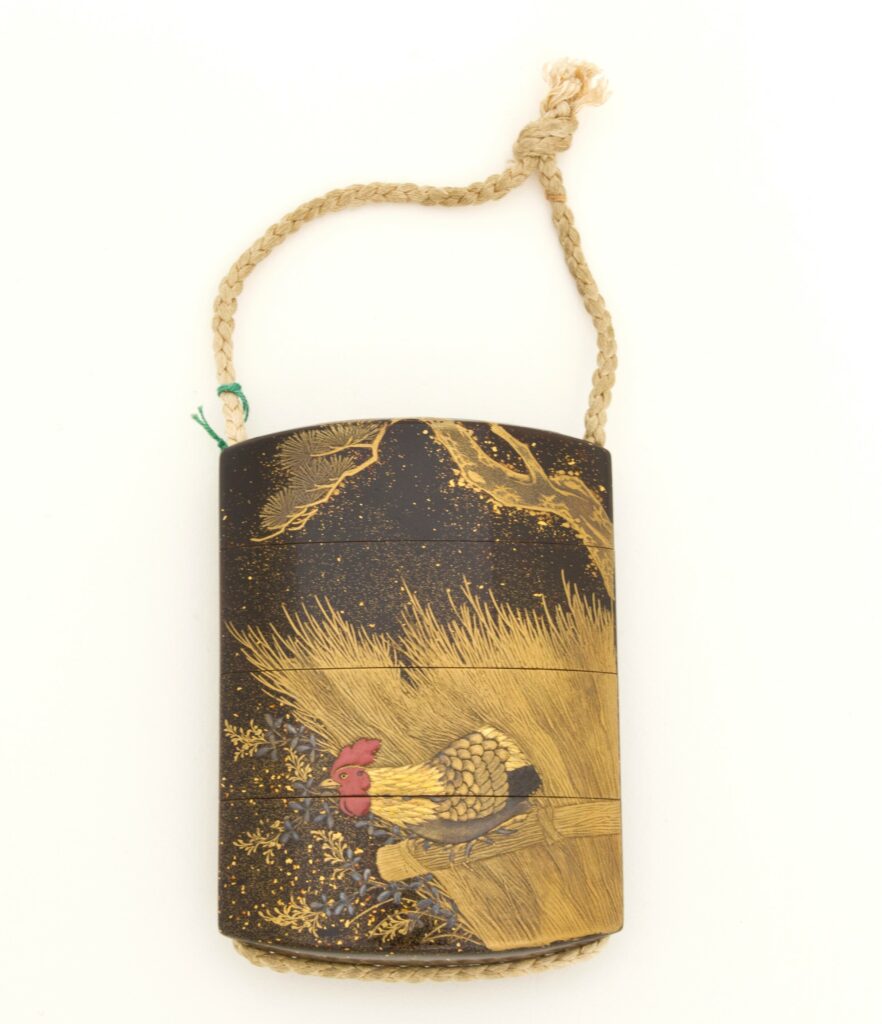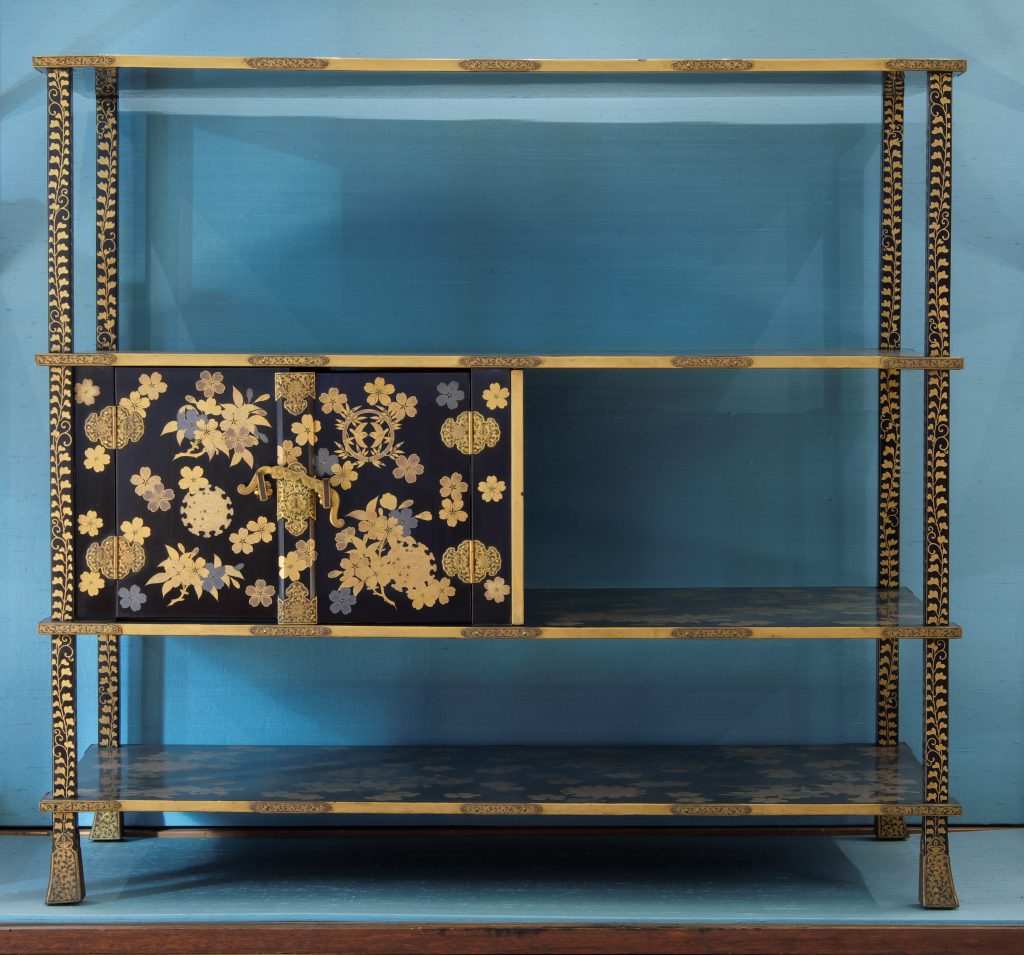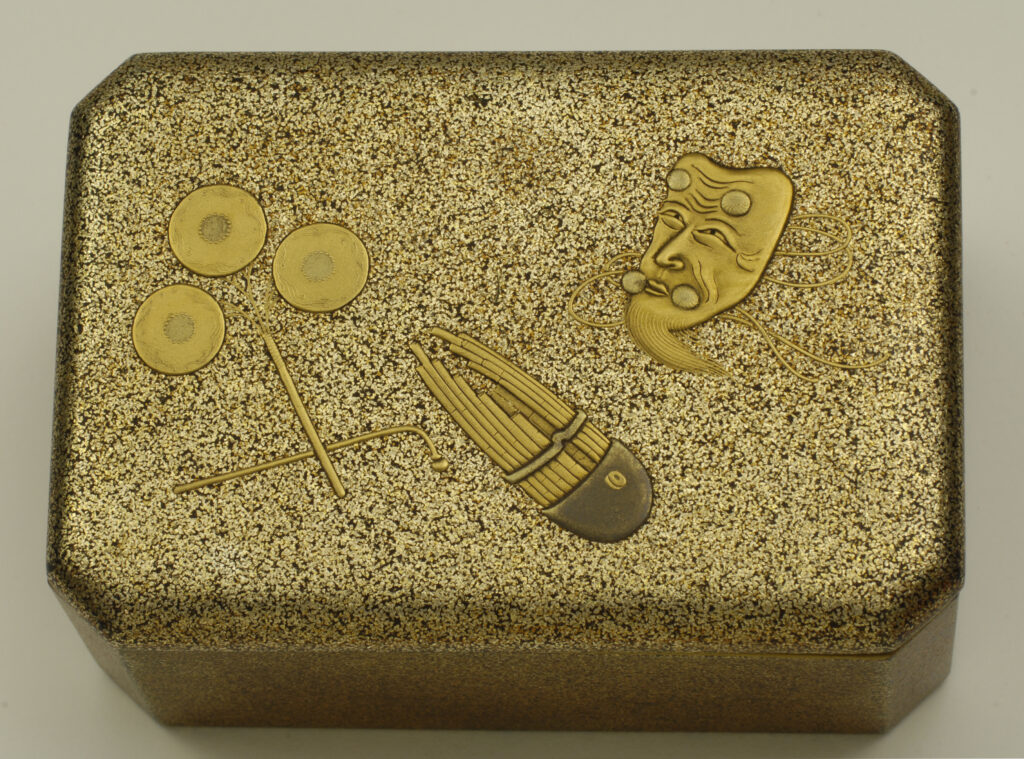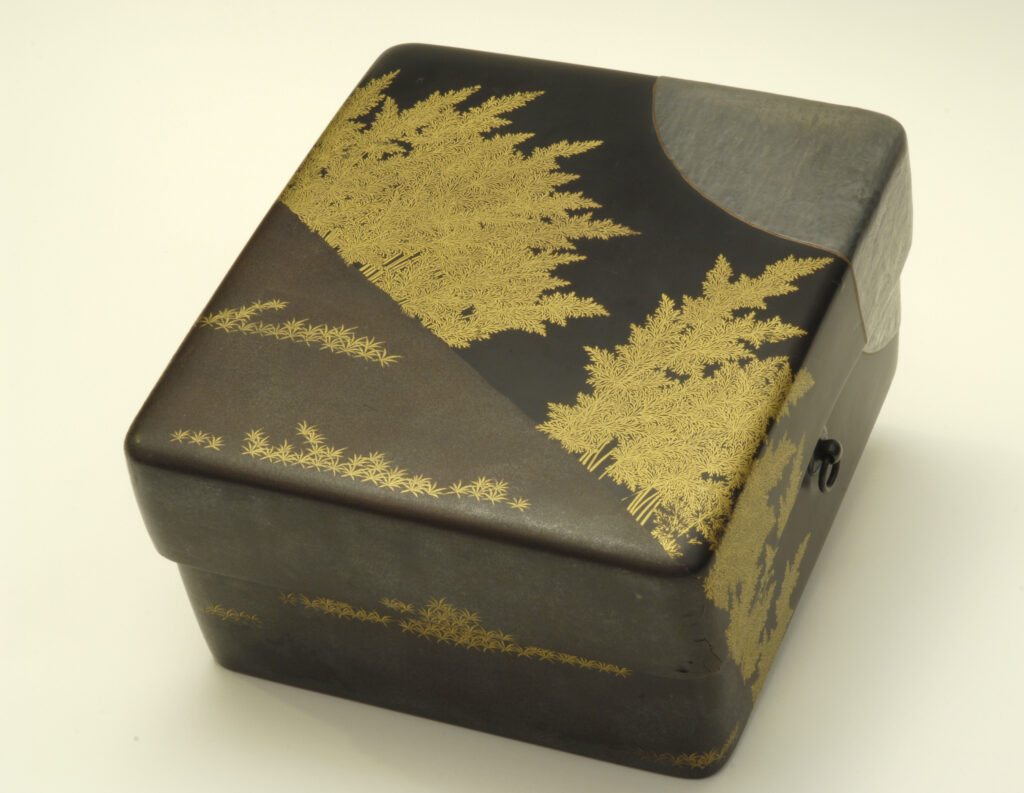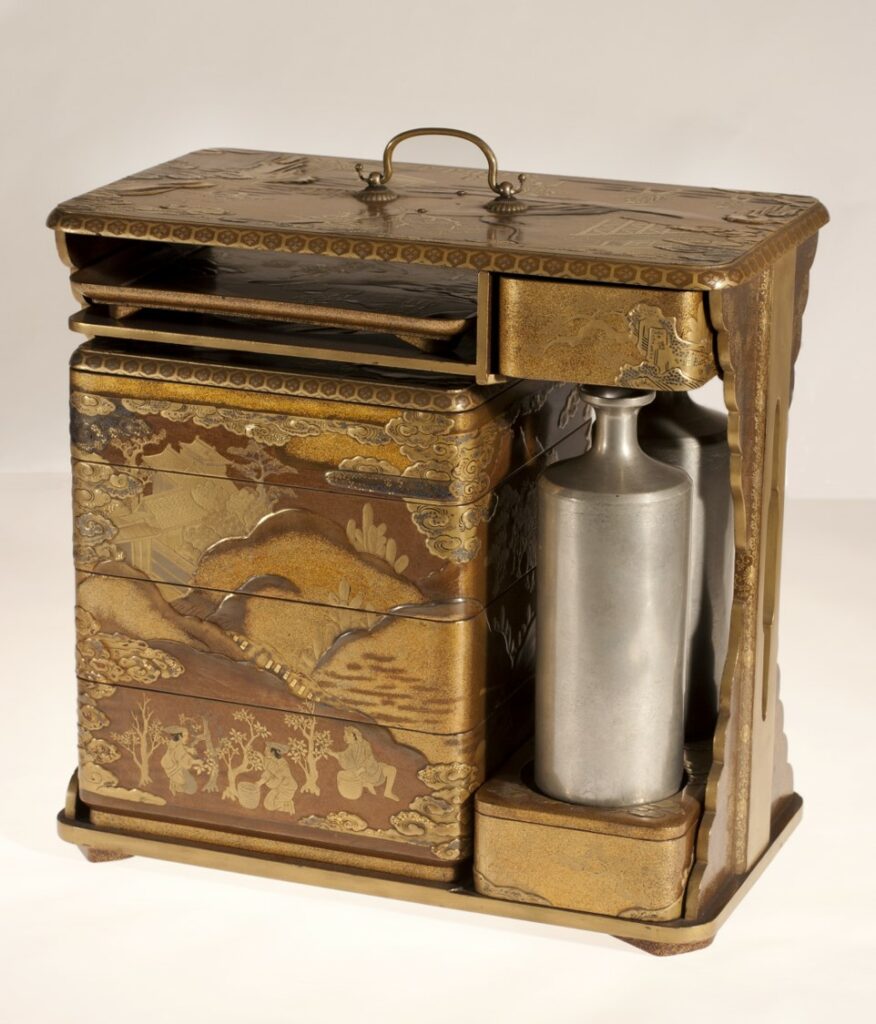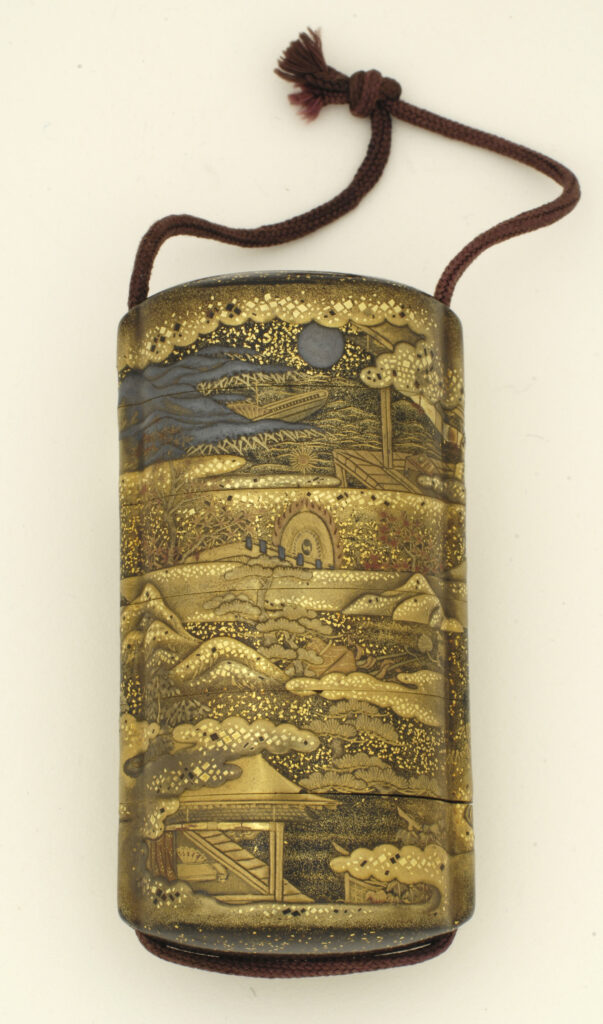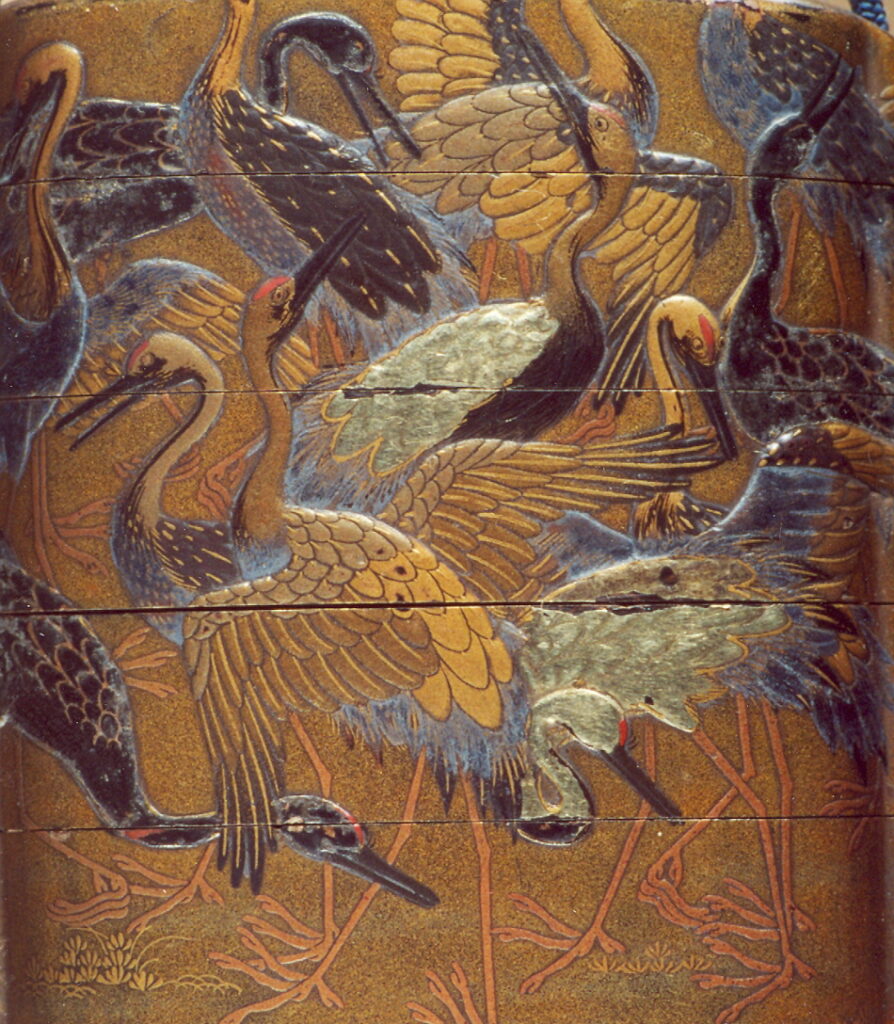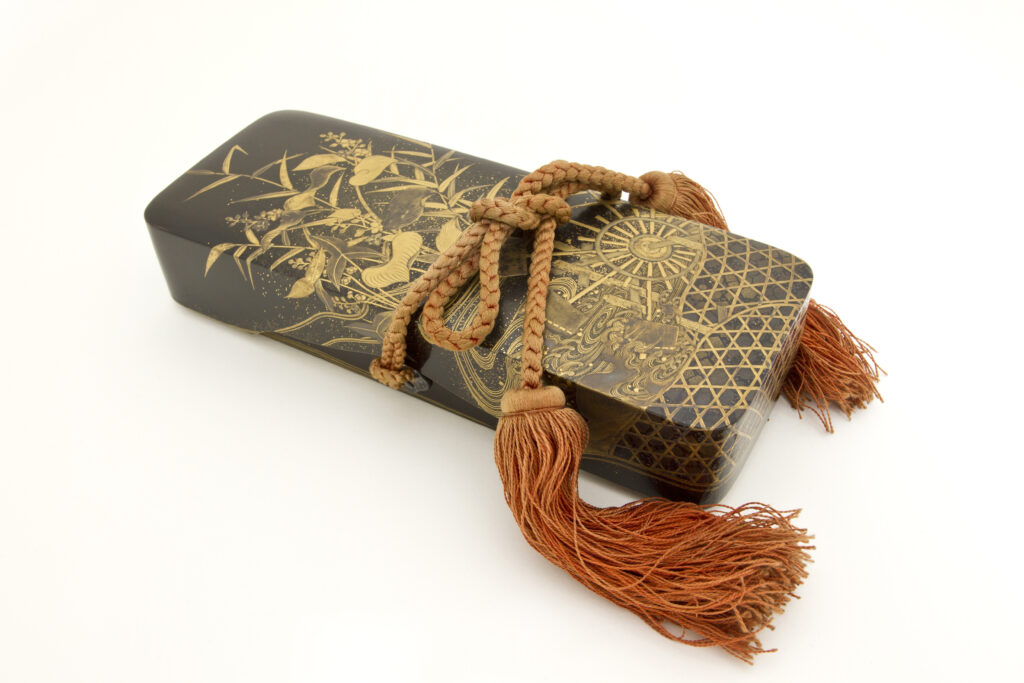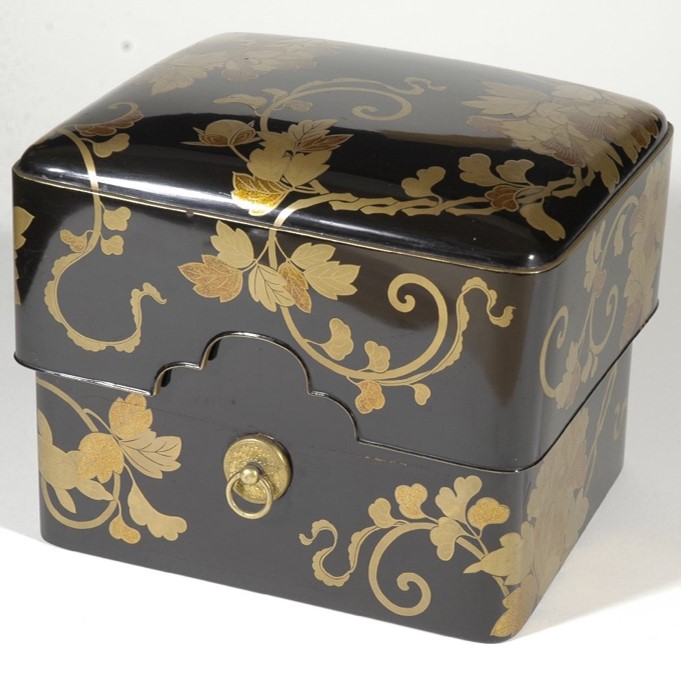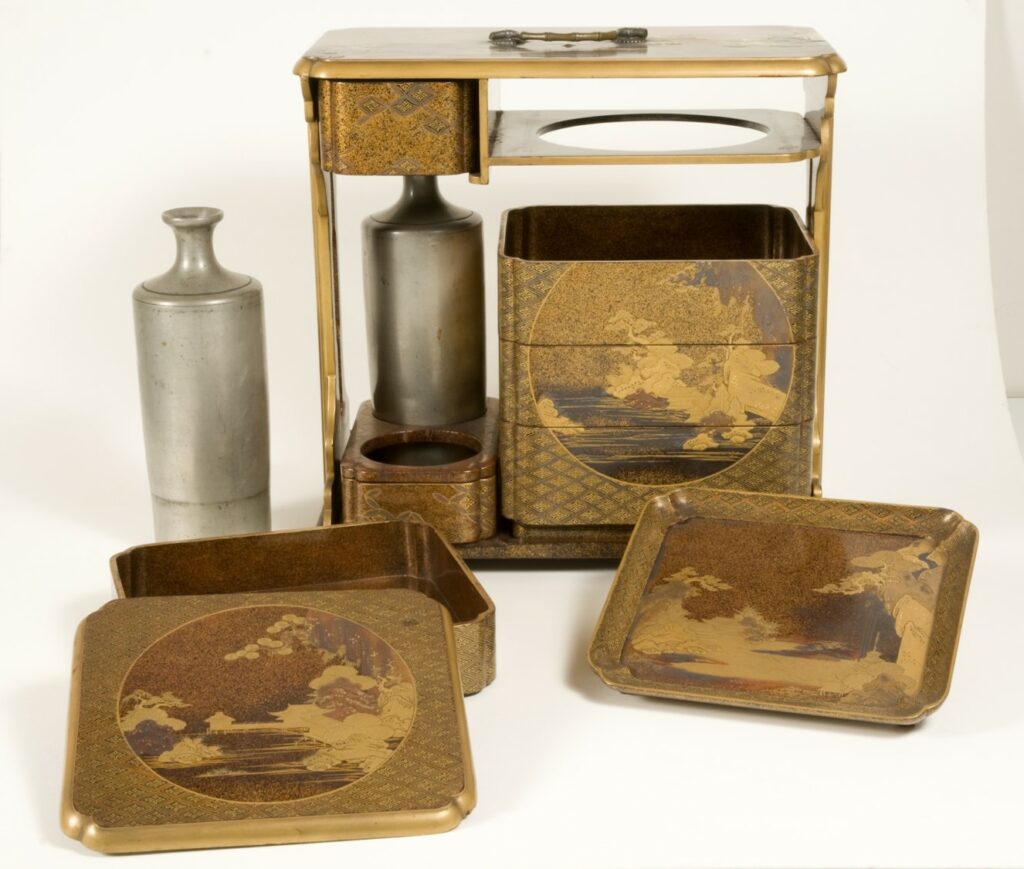ROOM 10
This room is entirely dedicated to lacquerware. Lacquer, urushi, is a viscous latex drawn from the Rhus verniciflua tree. Purifies, heated, and filtered, the lacquer is applied in layers to wooden objects, carefully prepared using some fabric, rough urushi and sabi.
Many inrō occupy the central cases: they are small portable herbs cases, divided into compartments, very commonly used during the Edo period. Finely decorated, these objects are decorated with auspicious decorative patterns, dear to literary tradition.
Inside the vertical showcases, there are suzuribako (writing boxes), stationery and documents boxes and writing tables.
The kurodana is a piece of furniture for tooth blackening, that shouldn’t miss in dowries of the rich lords' daughters. It is decorated with the mon (crests) of the Datē family
Among the most curious objects, there are some lunchboxes for outdoor banquets (sagejubako).
